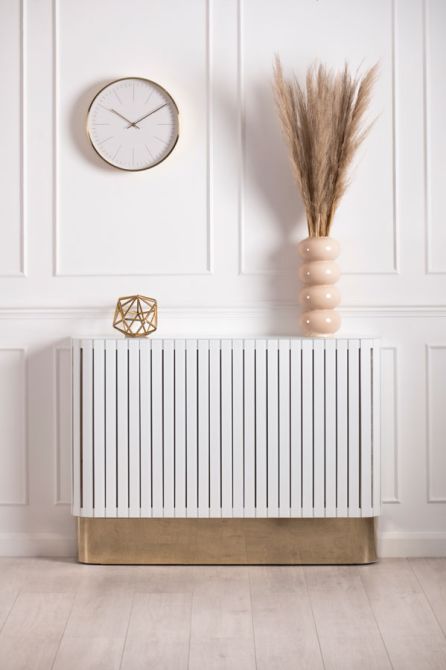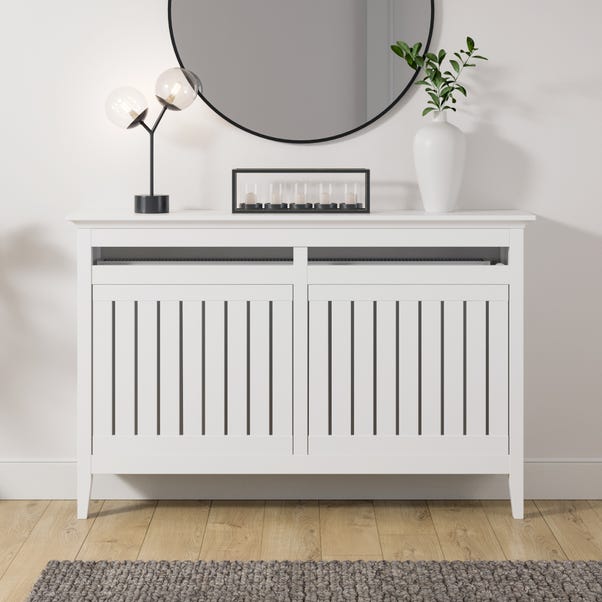DIY Tips for Installing a Radiator Cover easily
Wiki Article
Radiator Covers: Understanding Materials, Designs, and Advantages
Radiator covers offer both functional and aesthetic purposes within a home, offering a series of materials such as metal, mdf, and hardwood to suit different layout preferences. As designs evolveâEUR" from standard to contemporaryâEUR" these covers not only improve the aesthetic appeal of a room yet additionally contribute to safety and security and power performance. However, selecting the right radiator cover involves recognizing the subtleties of materials, styles, and their linked benefits. This expedition raises essential concerns regarding exactly how these elements integrate into your living atmosphere and what factors to consider need to lead your selection procedure.Kinds of Materials


Wooden covers, usually crafted from woods such as oak or maple, supply a traditional, warm appearance that matches conventional interiors. Their resilience and capacity to be tarnished or painted contribute to their versatility. Metal covers, normally made from steel or light weight aluminum, are preferred for their toughness and modern-day appearance, commonly featuring streamlined lines that improve contemporary areas.
MDF, a produced wood product, is prominent for its cost-effectiveness and ease of personalization. It can be repainted or finished to match existing design while offering a smooth surface. Plastic covers, while much less common, are resistant and light-weight to dampness, making them appropriate for moist settings.
Eventually, the selection of product for a radiator cover ought to straighten with the home owner's design choices, useful needs, and the details atmosphere where the cover will certainly be installed. Each material provides a distinct personality, making certain that there is an option to match every preference and setting.
Popular Design Styles
Emphasizing aesthetic allure, preferred layout styles for radiator covers mirror a variety of preferences and interior style trends. Typical designs usually include elaborate woodwork and ornate describing, making them ideal for vintage-inspired or timeless interiors. These covers usually incorporate sculpted components, providing a cozy and welcoming feeling to any space.In contrast, modern styles concentrate on minimal aesthetics, defined by tidy lines and underrated sophistication. Materials such as metal or smooth wood with a smooth surface are generally used, enabling these covers to mix flawlessly into contemporary areas. Industrial designs, on the other hand, embrace raw products like subjected metal and concrete, including a bold declaration to loft or city setups.
For those seeking a special touch, bespoke designs supply customization options that deal with private choices, making it possible for home owners to choose shades, patterns, and products that match their style. In addition, farmhouse-style covers incorporate rustic aspects, featuring distressed wood and straightforward kinds that stimulate a cozy, nation appeal.
Benefits of Radiator Covers
Radiator covers not just boost the aesthetic charm of a room but likewise supply several functional benefits that make them a beneficial enhancement to any type of home. Among the main benefits is security, particularly in houses with children or pets. Covers decrease the threat of burns from warm radiator surfaces, making sure a much safer atmosphere.Additionally, radiator covers can enhance power efficiency. By routing warm into the space instead of enabling it to get away, they aid keep a consistent temperature, reducing heating prices with time. This is especially useful in older homes where radiator systems might be less effective.
An additional noteworthy benefit is sound reduction. Radiators can in some cases create unwanted noises throughout operation, and covers can help stifle these noises, adding to a more calm living room. Additionally, radiator covers can be functional, giving added storage space or screen area, thereby optimizing the energy of often-overlooked areas.
Lastly, they can safeguard radiators from dirt and particles, which can impede effectiveness and boost maintenance requirements. With these combined benefits, radiator covers become a practical remedy for improving both the functionality and style of any home setting.
Installation Considerations
Setting up radiator covers needs cautious consideration to make sure both performance and security (Radiator cover). Initially, evaluate the dimensions of your radiator and the surrounding space to make certain a correct fit. Exact measurements are essential; an uncomfortable cover can block warmth circulation or develop safety hazardsFollowing, assess the material of the cover. While timber supplies aesthetic allure, steel alternatives might give far better toughness and heat resistance. Consider the weight of the cover as well; heavier covers may require additional support or supports to prevent drooping or damage in time.
Air flow is another important element. Covers have to feature adequate air movement to avoid overheating and preserve reliable heating. Seek styles with slats or openings that allow heat to circulate without blockage.
Additionally, guarantee that the cover is firmly installed to stop accidents, particularly in homes with children or family pets. Radiator cover. It's advisable to follow the supplier's setup standards very closely and, if needed, get in touch with a discover here specialist for complex setups
Maintenance and Treatment Tips
Proper maintenance of radiator covers is essential for ensuring their longevity and ideal performance. For painted or timber covers, take into consideration an ideal gloss or safety finish to maintain their look.Examine the covers regularly for signs of wear or damage, such as cracks or peeling off paint. Dealing with these concerns without delay can protect against additional deterioration. Make certain that the covers are securely attached and inspect for any kind of loosened screws or fittings, as resonances from the radiator can loosen them gradually.
In chillier months, prevent placing heavy things or attractive items on top of the radiator covers, as this can impede warmth circulation and create unneeded stress and anxiety to the structure. Think about seasonal upkeep by getting rid of the covers for thorough cleaning and assessment during warmer months when the heating system is non-active. Embracing these simple care ideas will certainly boost the efficiency and visual charm of your radiator covers, ensuring they offer their objective efficiently for many years ahead.

Final Thought
In recap, radiator covers function as practical and aesthetic improvements to household rooms. The diverse range of materials, consisting of hardwoods, mdf, metal, and plastic, enables positioning with different style styles such as standard, modern, industrial, and farmhouse. The advantages of these covers expand past safety and energy efficiency to consist of extra storage and dirt defense. Mindful consideration of installation and upkeep more ensures the longevity and efficiency of radiator covers in any type of home atmosphere.Radiator covers serve both functional and visual objectives within a home, using a variety of materials such as steel, hardwood, and mdf to match numerous style preferences. Selecting the ideal radiator cover includes understanding the subtleties of materials, layouts, and their associated benefits.Emphasizing aesthetic appeal, prominent style styles for radiator covers mirror a range of preferences and interior layout patterns.Radiator covers not only boost the aesthetic allure of a space but also use a number check of useful benefits that make them imp source a rewarding addition to any kind of home. Think about the weight of the cover as well; larger covers may require added support or reinforcements to prevent drooping or damages over time.
Report this wiki page